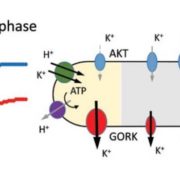
Viewpoint: Signalling by potassium: another second messenger to add to the list?
Blog, Plant Science Research Weekly, Research, Research Blog0 Comments
/
Potassium (K+) retention in the roots and shoots is correlated with increased tolerance to salinity and drought. However, in response to salt stress, K+ efflux from roots is induced. Shabala investigates three possible reasons for this stress-induced K+ efflux: K+ could leave to charge-balance the…

Editorial: Introducing Plant Direct
Blog, Plant Science Research Weekly, Research, Research BlogEditor-in-Chief Ivan Baxter introduces the new journal Plant Direct, “a new journal from Wiley and the societies behind Plant Physiology, The Plant Journal, and The Plant Cell” [that is, the American Society of Plant Biologists (ASPB) and Society for Experimental Biology (SEB)]. This new Open Access…
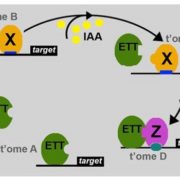
A Genome-wide Approach to Understanding a Non-Canonical ARF
Blog, Research, Research Blog, The Plant Cell, The Plant Cell: In BriefThe canonical auxin-response pathway in plants begins with auxin sensing by F-box proteins, triggering degradation of AUX/IAA proteins that act as transcriptional repressors via their interaction with sequence-specific DNA-binding AUXIN RESPONSE FACTORS (ARFs; reviewed in Weijers and Wagner, 2016). Recently,…

Recognizing featured Plant Cell first authors, July 2017
Blog, Careers, Profiles of Plant Scientists, Research, Research Blog, The Plant Cell, The Plant Cell: Author ProfilesElizabeth Henry, featured first author of Direct and Indirect Visualization of Bacterial Effector Delivery into Diverse Plant Cell Types During Infection
Current Position: Postdoctoral Scholar, Discovery and Project Support in Crop Efficiency and Seed Growth, Biologics R&D at Bayer Crop Science.
Education:…
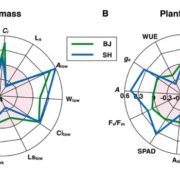
Leaf Photosynthesis and Biomass Accumulation
Blog, Plant Physiology, Plant Physiology: On The Inside, Research, Research BlogImproving photosynthetic efficiency is a major target for increasing crop biomass production and yield potential. The canopy photosynthetic efficiency, which is determined by leaf area index, canopy architecture, and leaf photosynthetic properties, plays an important role in determining biomass accumulation.…

A Regulator of Calcium Signatures Revealed
Blog, Plant Physiology, Plant Physiology: On The Inside, Research, Research BlogCalcium (Ca2+) is an important cellular second messenger for diverse developmental processes and environmental responses in both plants and animals. Transient increases in cytosolic Ca2+ are activated in plants during a host of environmental and developmental processes, including root growth, stomatal…
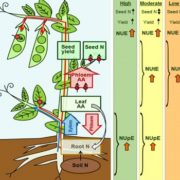
Transporter Function and N Use Efficiency
Blog, Plant Physiology, Plant Physiology: On The Inside, Research, Research BlogNitrogen (N) is an essential nutrient that plants require in large amounts for growth and development. In industrial countries, high N fertilization enables maximum crop yields, and in the last 50 years, the use of synthetic N fertilizers has increased dramatically to meet food demands. Improving the…
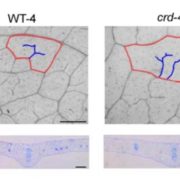
Venation, Water Transport and Photosynthetic Rate
Blog, Plant Physiology, Plant Physiology: On The Inside, Research, Research BlogLand plants lose vast quantities of water to the atmosphere during photosynthetic gas exchange. To supply this high demand for water an internal transport system comprised of xylem conduits irrigates the leaf. Selection for greater rates of photosynthesis and increased productivity is believed to have…
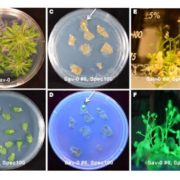
Efficient Plastid Transformation in Arabidopsis
Blog, Plant Physiology, Plant Physiology: On The Inside, Research, Research BlogThe plastid genome of higher plants encodes about 100 genes, the products of which assemble with approximately 3,000 nucleus-encoded proteins to form the plastid transcription and translation machinery and carry out complex metabolic functions, including photosynthesis and fatty acid and amino acid biosynthesis.…

